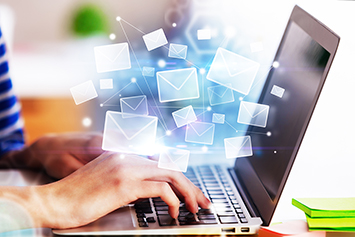As we noted in a previous post, the COVID-19-triggered shift to remote work has moved conversations that once took place at the proverbial watercooler, in conference rooms, or by popping into a coworker’s workspace to virtual formats. Even when that format is a video call, much of the nuance of in-person communication is lost. This is even more pronounced when shifting to purely written forms of communication like instant messenger and e-mail.
So much is lost when communicating purely through writing. Vocal inflections, facial expressions, and body language are all crucial aspects of communication, especially when dealing with sensitive or uncomfortable topics.
A great example is following up on late deliverables.
Crafting Reminder E-Mails Carefully
Even the most diligent staff may let something slip, and there’s certainly nothing wrong with following up. But, as Leila Lewis writes in an article for Fast Company, the “friendly” reminder e-mails can easily rub people the wrong way.
“You might think that ‘friendly reminder’ emails are a nice attempt to be professional while disguising your actual annoyance at whoever’s holding you up from finishing something,” she writes. “In other words, it’s just a non-confrontational way to ask for something that’s late. Well guess what? That’s all a misguided fantasy and it’s making everybody you email with secretly resent you.”
Pick Up the Phone!
Lewis goes on to argue that phrasing such follow-ups as “friendly reminders” undercuts the sender’s credibility and makes the person seem weak. Although not everyone will resent a friendly reminder e-mail, it does speak to the idea that e-mail communication may be less than ideal for sensitive topics—specifically, checking in on late or missing work.
Instead, consider simply picking up the phone. A phone call allows for more nonverbal communication cues than an e-mail. Many people label a follow-up as a “friendly reminder” because they don’t want to come across as pushy, and it’s definitely easier to convey mood via a real-time phone call than an e-mail.
However, there are benefits to maintaining a record of follow-ups if late deliverables have become a problem and you want to document examples of delinquency. If you’re going to follow up via e-mail, Lewis’s main point is that there’s no need to soften the delivery. Just be direct and ask for what’s needed.
The shift to remote work means it’s more important than ever to be conscious of the hidden messages in your written communications. Instead of a soft “friendly reminder” message, consider a simple phone call or a more direct e-mail.

